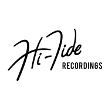
Posted on May 13 2023 04:03 PM
racingsnail84 wrote:
synchro wrote:
For me, it sorta depends. Harmonic tremolo lends a throbbing effect, without a big change in overall volume, so it works in a lot of situations. Bias-modulating trem', or the trem'-pedal equivalent, has a bit more pervasive effect, and while I love it, I still use it somewhat sparingly.
What are some Harmonic trem pedals you like?
I’ve only ever used the Boss tr-2 and as much as I love it , it produces a slight but noticeable hiss when engaged. It can also be a bit too much, even for a tremolo freak like me lol
I have a suspicion I’ll love the harmonic trem and that may be the effect I’ve been chasing without knowing the difference between harmonic vs bias modulating
I really appreciate your input…. Thanks! 

I have three pedals which provide tremolo, the Stanley Blue Nebula, the Source Audio Vertigo Tremolo, and the Source Audio True Spring Reverb, which includes the same basic tremolo effects as the Vertigo Tremolo, plus some great Spring Reverb emulations.
The Blue Nebula has a basic, sine-wave tremolo, which is a pretty decent bias-modulating tremolo emulation. The Blue Nebula has an array of tape-delay and magnetic drum delay emulations, along with great Plate Reverb, a Dual Chorus, a great clean preamp, and lotsa other good stuff. If you want to duplicate Hank Marvin’s delays, from the Shadows, this pedal is the perfect tool, and it’s a great, overall, modulation effect processor.
A couple of years ago, I was visiting amp-builder Winfield Thomas, and he let me play through a ‘60s Fender amp with the five-triad harmonic tremolo, and I was smitten. These tremolos were on the Brownface Showman and Bandmaster amps. Instead of simply modulating volume, Harmonic Tremolo, uses filters and varies the volume by frequency band, so the highs will be at low volume while the lows are at high volume, and vice versa. The effect is a throbbing, pulsing, complex sound, but there is not the volume loss of a strictly volume modulating tremolo.
This brings us to the TR-2, which I feel is a pretty good pedal. The older TR-2s suffered some volume loss, because the older TR-2s basically left the peak volume intact, and modulated by lowering the volume, which had the effect of lowering the “area under the curve”. More recent TR-2s boosted the signal for the high volume parts and cuts the volume of the low volume parts, keeping the area under the curve constant, and eliminating the sensation of the volume being lowered when the pedal is engaged.
Bias-modulating tremolo, such as a Tweed Vibrolux or a Brownface Princeton have, works by actually changing the bias of the power tubes. This makes for a very deep tremolo, which sounds very rich. Bias modulation has one significant limitation, because it is actually acting directly on the power amp section of the amp, it puts some added stress on the power tubes. For lower power tubes, such as the 6V6, this isn’t much of a problem, but for higher power tubes, such as 5881s or 6L6s, the tube life will be compromised. The amazing 1963 Vibroverb was one of Fender’s most innovative designs, but the combination of bias-modulating tremolo and the 6L6 power tubes made for reduced service life for the power tubes, especially if the tremolo depth was set high. This problem led directly to the optically-coupled tremolo circuit of the Blackface era, which sounds good, but does not have the lushness of bias modulation. Think Tommy James and the Shondells, Crimson and Clover.
So the Source Audio pedals both emulate bias, harmonic and optical tremolo. The Vertigo Tremolo has these three as primary effects, which can be selected with a three-position switch, and one of the knobs allows you to select 1/4 note, 1/8 note, triplet or 1/16 note divisions of the tempo. I use a Tap Tempo pedal to set the speed.
The Source Audio True Spring has tremolo as a secondary effect, which can either be selected by pressing a button-switch on the pedal, or from an external switch. However, I use the external switch as a Tap Tempo, so I use the button on the pedal.
The quality of the tremolos in the Source Audio pedals is great. The Harmonic Trem’ sounds quite authentic, as does the Bias Trem’. The Optical Trem’ has that more abrupt sound of the mid ‘60s amps. Beyond that, the True Spring has excellent reverb emulations.
I have a small pedalboard I use at home, which is right next to me chair, where I can reach it to make adjustments on the fly. It’s a Boss Analog Delay, a True Spring, a Blossom Point and a Tap Tempo. The True Spring is so versatile that I can use it for pretty much any genre. The greatest advantage to the Vertigo is that it’s easier to switch the tremolo on and off via foot switch, so I use it on my main board.

—
The artist formerly known as: Synchro
When Surf Guitar is outlawed only outlaws will play Surf Guitar.
































